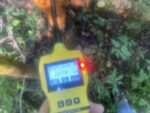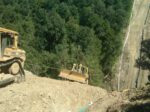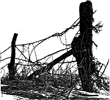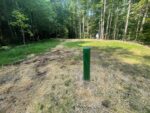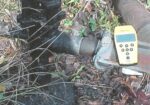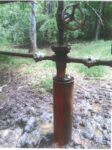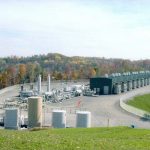Posts by WVSORO
465 posts found, showing 20 per page
Tell the House of Delegates: Don’t stop West Virginians from getting paid for offsetting carbon with their trees!
Updates and Alerts WVSORO March 5, 2024
SB 618 would do by establishing these unnecessary hurdles that will discourage companies from investing in carbon exchange programs in West Virginia. Contact your member of the House of Delegates. Tell them to vote “NO” on SB 618. More
Updates and Alerts WVSORO March 5, 2024
SB 618 would do by establishing these unnecessary hurdles that will discourage companies from investing in carbon exchange programs in West Virginia. Contact your member of the House of Delegates. Tell them to vote “NO” on SB 618. More
Take Action to Protect Citizen Air Monitoring
Updates and Alerts WVSORO February 12, 2024
Please take action and tell your Senators to reject HB 5018. HB 5018 could prevent you from being able to use in court data you collect (like with a methane detector) from stationary sources of pollution (like a gas well etc.) on or next to or near your land. If courts are not supposed to legislate, then legislatures should not rule on evidence. More
Issues: Pollution
Updates and Alerts WVSORO February 12, 2024
Please take action and tell your Senators to reject HB 5018. HB 5018 could prevent you from being able to use in court data you collect (like with a methane detector) from stationary sources of pollution (like a gas well etc.) on or next to or near your land. If courts are not supposed to legislate, then legislatures should not rule on evidence. More
Issues: Pollution
Panel discussion on pipelines.
Pipeline Advice WVSORO December 15, 2023
In 2014 WVSORO had a membership meeting that included a panel discussion on pipelines. The two videos below will let you view that. More
Pipeline Advice WVSORO December 15, 2023
In 2014 WVSORO had a membership meeting that included a panel discussion on pipelines. The two videos below will let you view that. More
Tour of gas wells & their problems in Kanawha State Forest
Blog WVSORO December 13, 2023
Here is a 29-minute video of a guided Tour of Gas Wells & Their Problems in Kanawha State Forest recorded in November of 2023. The 9000-acre Kanawha State Forest is technically a state "forest", but after citizen complaints to the Legislature about logging there, it is now managed as a state park. More
Blog WVSORO December 13, 2023
Here is a 29-minute video of a guided Tour of Gas Wells & Their Problems in Kanawha State Forest recorded in November of 2023. The 9000-acre Kanawha State Forest is technically a state "forest", but after citizen complaints to the Legislature about logging there, it is now managed as a state park. More
Surface Owners’ News 2023 Print Edition Now Available
Updates and Alerts WVSORO November 30, 2023
The 2023 print edition of Surface Owners News is now available. We hope you enjoy reading the latest news and updates from the WV Surface Owners' Rights Organization. More
Issues: Abandoned wells, Land use, Orphaned wells, Pollution, Well pads
Updates and Alerts WVSORO November 30, 2023
The 2023 print edition of Surface Owners News is now available. We hope you enjoy reading the latest news and updates from the WV Surface Owners' Rights Organization. More
Issues: Abandoned wells, Land use, Orphaned wells, Pollution, Well pads
Farmland preservation is now OK for surface only owners.
Advice WVSORO November 15, 2023
Many surface owners have owned their farmland for generations and want it to remain farmland for future generations. Another scenario is that sometimes landowners who more recently acquired their surface farmland want to see their land saved from development as suburbs or from industrial development. More
Advice WVSORO November 15, 2023
Many surface owners have owned their farmland for generations and want it to remain farmland for future generations. Another scenario is that sometimes landowners who more recently acquired their surface farmland want to see their land saved from development as suburbs or from industrial development. More
What is a “Division Order”?
Leasing / Amendment Advice WVSORO November 15, 2023
Do I have to sign it to get my royalties after the well is drilled? More
Issues: Minerals-Royalties
Leasing / Amendment Advice WVSORO November 15, 2023
Do I have to sign it to get my royalties after the well is drilled? More
Issues: Minerals-Royalties
WVSORO comments to Bureau of Land Management on new federal lands oil and gas leasing bonding rule that will guarantee future orphaned wells.
Blog WVSORO October 31, 2023
WVSORO can find no examples of where bonding paid the full cost of plugging when a well owner goes out of business. Instead the driller should stat setting aside money when the well first goes not line (when there is money). And blanket/statewide bonding is sure to fail. More
Blog WVSORO October 31, 2023
WVSORO can find no examples of where bonding paid the full cost of plugging when a well owner goes out of business. Instead the driller should stat setting aside money when the well first goes not line (when there is money). And blanket/statewide bonding is sure to fail. More
A judge rules surface owners with unplugged, inactive wells on them can sue the driller to make them plug the well or sue for money to plug the well
Leasing / Amendment Advice WVSORO April 22, 2023
Diversified and EQT say that surface owners can't sue about unplugged wells because the drillers have entered into well plugging consent orders with the DEP. Because the consent order of Diversified would only require the plugging of wells in 400 years and for other reasons the judge ruled that surface owners can sue. More
Issues: Oil and Gas
Leasing / Amendment Advice WVSORO April 22, 2023
Diversified and EQT say that surface owners can't sue about unplugged wells because the drillers have entered into well plugging consent orders with the DEP. Because the consent order of Diversified would only require the plugging of wells in 400 years and for other reasons the judge ruled that surface owners can sue. More
Issues: Oil and Gas
WVSORO comments on newest proposed EPA methane rule.
Blog WVSORO February 20, 2023
EPA's proposed rule only requires inspections of well sites by "AVO" -- audio, visual, and olfactory means. We are not making this up! Methane has no smell, and can't be seen, and only big leaks make sounds! Handheld methane detectors start at $31 to $100 dollars and should be used! More
Issues: EPA, Methane, Oil and Gas
Blog WVSORO February 20, 2023
EPA's proposed rule only requires inspections of well sites by "AVO" -- audio, visual, and olfactory means. We are not making this up! Methane has no smell, and can't be seen, and only big leaks make sounds! Handheld methane detectors start at $31 to $100 dollars and should be used! More
Issues: EPA, Methane, Oil and Gas
Surface Owners say DEP needs at least 45, not just 23, oil and gas inspectors.
Updates and Alerts WVSORO February 7, 2023
Senate Bill 448 and House Bill 3110 have passed out of the Energy Committees in their respective houses and are now in their Finance Committees. The DEP and the industry and the Governor and maybe some Legislator agreed to fund a total of 23 inspectors in this bill. No one talked to us surface owners whether we agreed to that number -- and we are where the wells are leaking and stinking! More
Issues: DEP, Oil and Gas, Pollution
Updates and Alerts WVSORO February 7, 2023
Senate Bill 448 and House Bill 3110 have passed out of the Energy Committees in their respective houses and are now in their Finance Committees. The DEP and the industry and the Governor and maybe some Legislator agreed to fund a total of 23 inspectors in this bill. No one talked to us surface owners whether we agreed to that number -- and we are where the wells are leaking and stinking! More
Issues: DEP, Oil and Gas, Pollution
WVSORO Points Out that Much More Funding Is Needed for Many More Inspectors
Blog WVSORO February 7, 2023
See the latest under Newslinks for where we are February 4, 2023. Right now the Legislation will only give us half the inspectors per wells that Pennsylvania and Ohio have. Contact your legislators and ask for more -- at least 45 -- at this web site. More
Issues: DEP, Oil and Gas
Blog WVSORO February 7, 2023
See the latest under Newslinks for where we are February 4, 2023. Right now the Legislation will only give us half the inspectors per wells that Pennsylvania and Ohio have. Contact your legislators and ask for more -- at least 45 -- at this web site. More
Issues: DEP, Oil and Gas
WVSORO comments to EPA about how Inflation Reduction Act money should be used.
Abandoned Well Advice WVSORO January 17, 2023
Here is an op-ed written by WVSORO co-founder that appeared in the Charleston Gazette-Mail. The op-ed mimics comments that were made to EPA about how the money should be used to find and reduce methane leaks on surface owners' land and not subsidize drillers who have wells they should already be plugging. More
Issues: Abandoned wells, Orphaned wells
Abandoned Well Advice WVSORO January 17, 2023
Here is an op-ed written by WVSORO co-founder that appeared in the Charleston Gazette-Mail. The op-ed mimics comments that were made to EPA about how the money should be used to find and reduce methane leaks on surface owners' land and not subsidize drillers who have wells they should already be plugging. More
Issues: Abandoned wells, Orphaned wells
Reducing Noise in Gas Drilling and Production
Noise Advice WVSORO November 4, 2022
Sound is a form of energy. Think of throwing a rock in to a pool of water; it will make waves that move away from the rock. As the waves get farther from the rock, they get weaker More
Noise Advice WVSORO November 4, 2022
Sound is a form of energy. Think of throwing a rock in to a pool of water; it will make waves that move away from the rock. As the waves get farther from the rock, they get weaker More
Well Pluggers Permit Application Form
Document WVSORO July 21, 2022
Issues: Abandoned wells, Orphaned wells
Document WVSORO July 21, 2022
Issues: Abandoned wells, Orphaned wells
If you find out there is a proposal to plug an oil or gas well on your land, what should you do?
Abandoned Well Advice, Advice WVSORO July 19, 2022
A big increase in well plugging is starting to happen. To know how you should react go to our web page, and do so right away! More
Issues: Abandoned wells
Abandoned Well Advice, Advice WVSORO July 19, 2022
A big increase in well plugging is starting to happen. To know how you should react go to our web page, and do so right away! More
Issues: Abandoned wells
Update on forced pooling/unitization; and plugging; and inspectors
Updates and Alerts WVSORO June 14, 2022
The most significant oil and gas/surface owner/mineral owner legislation to come out of the Legislature earlier this year was the new forced pooling/unitization statute. (Technically it is the "unitization" part that affects us, and pooling is about fights between drillers, so we will compromise with popular terminology and use the slashed term "pooling/unitization".) More
Issues: Pooling
Updates and Alerts WVSORO June 14, 2022
The most significant oil and gas/surface owner/mineral owner legislation to come out of the Legislature earlier this year was the new forced pooling/unitization statute. (Technically it is the "unitization" part that affects us, and pooling is about fights between drillers, so we will compromise with popular terminology and use the slashed term "pooling/unitization".) More
Issues: Pooling
Have you been threatened with forced pooling/unitization? Have your received papers giving you notice of a forced pooling/unitization hearing?
Leasing / Amendment Advice WVSORO June 7, 2022
This is WVSORO's advice to mineral owners (and assurance to surface owners) after passage of forced pooling/unitization legislation effective June, 2022. More
Issues: Pooling
Leasing / Amendment Advice WVSORO June 7, 2022
This is WVSORO's advice to mineral owners (and assurance to surface owners) after passage of forced pooling/unitization legislation effective June, 2022. More
Issues: Pooling


